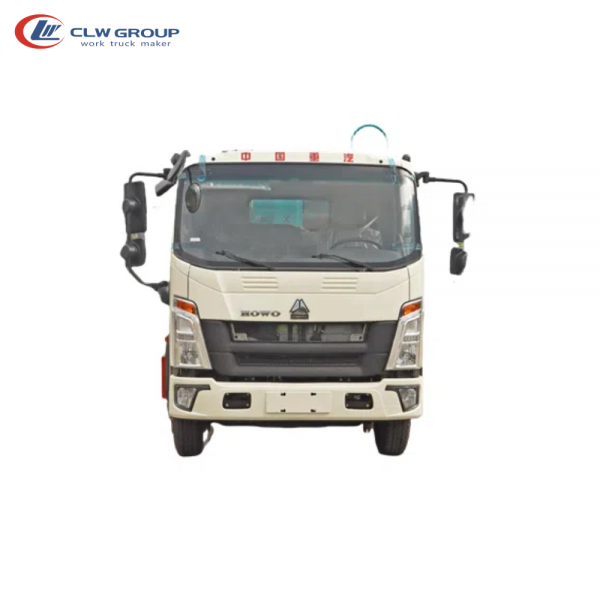Maximizing Efficiency Understanding Box Truck Capacity
Introduction Box trucks play a crucial role in the transportation industry, serving as versatile vehicles capable of carrying a wide range of goods. Understanding box truck capacity is essential for businesses and individuals that rely on these vehicles for transporting goods efficiently and safely. In this article, we will delve into the various aspects of box truck capacity, including how it is determined, factors that affect it, and tips for maximizing efficiency. Box Truck Capacity Defined Box truck capacity refers to the maximum weight or volume of goods that a box truck can safely transport. This capacity is typically expressed in terms of weight (pounds or kilograms) or volume (cubic feet or meters). Understanding box truck capacity is essential for ensuring that goods are transported safely and efficiently without overloading the vehicle. Determining Box Truck Capacity Box truck capacity is determined by several factors, including the size and dimensions of the truck's cargo area, the weight-bearing capacity of the truck's chassis, and any legal restrictions on weight limits for commercial vehicles. Manufacturers provide specifications for each box truck model, detailing its maximum payload capacity in terms of weight and volume. To calculate the maximum payload capacity of a box truck, it is essential to consider the following factors: 1. Cargo Area Dimensions: The length, width, and height of the cargo area will determine the volume of goods that can be loaded into the box truck. The total volume of the cargo area is calculated by multiplying these dimensions together. 2. Weight-Bearing Capacity: The truck's chassis and suspension system have a maximum weight-bearing capacity, which includes the weight of the cargo, fuel, and passengers. Exceeding this capacity can lead to safety hazards and damage to the vehicle. 3. Legal Restrictions: Commercial vehicles are subject to weight limits imposed by local and federal regulations. It is crucial to comply with these weight limits to avoid fines and penalties. Factors Affecting Box Truck Capacity Several factors can affect the capacity of a box truck, including: 1. Payload Distribution: Properly distributing the weight of the cargo within the box truck is crucial for maintaining stability and preventing overloading. Uneven distribution can lead to imbalanced weight distribution and affect the vehicle's handling. 2. Cargo Weight: The weight of the cargo being transported is a significant factor in determining the box truck's capacity. Heavier items will reduce the available payload capacity, while lighter items may allow for more goods to be loaded. 3. Vehicle Maintenance: Regular maintenance of the box truck, including checking the tires, brakes, and suspension system, is essential for ensuring that the vehicle can safely carry its maximum payload capacity. 4. Environmental Conditions: Factors such as road conditions, weather, and terrain can affect the box truck's capacity by influencing its handling and performance. It is important to consider these factors when determining the suitable payload for a given transport route. Maximizing Efficiency To maximize the efficiency of box truck operations and optimize its capacity, consider the following tips: 1. Plan Ahead: Proper planning of the transport route and schedule can help optimize the use of the box truck's capacity. Consolidating refrigerator truck into a single trip can reduce empty miles and increase efficiency. 2. Use Load-Optimization Software: Utilize load-optimization software to determine the most efficient way to load goods into the box truck, taking into account weight distribution, cargo volume, and space utilization. 3. Train Drivers: Provide training to box truck drivers on proper loading techniques, weight distribution, and safety practices to ensure that the vehicle's capacity is not exceeded and that goods are transported safely. 4. Monitor Performance: Regularly monitor the box truck's performance, including fuel efficiency, handling, and maintenance needs, to identify areas for improvement and ensure that the vehicle is operating at its optimal capacity. Conclusion  Understanding box truck capacity is essential for businesses and individuals involved in the transportation of goods. By considering factors such as cargo area dimensions, weight-bearing capacity, and legal restrictions, it is possible to maximize the efficiency of box truck operations and ensure safe and reliable transport of goods. By following the tips outlined in this article, businesses can optimize their box truck capacity and enhance their overall transportation operations.
Understanding box truck capacity is essential for businesses and individuals involved in the transportation of goods. By considering factors such as cargo area dimensions, weight-bearing capacity, and legal restrictions, it is possible to maximize the efficiency of box truck operations and ensure safe and reliable transport of goods. By following the tips outlined in this article, businesses can optimize their box truck capacity and enhance their overall transportation operations.